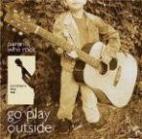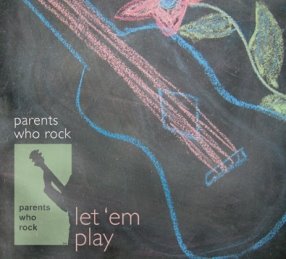Playgrounds that Welcome Wheelchairs
By JENNIFER V. HUGHES
Published: July 6, 2008
The New York Times
THE first time Lisa Vaccino took her children to Hannah’s Dream, a playground in New Haven designed for disabled children, she immediately noticed a difference in her son, Johnny, 5, who has cerebral palsy.
“When we got back into the car that day I didn’t even have to ask him. He said, ‘That was fun!’ ” said Mrs. Vaccino, who also has a daughter, Emma, 2, who is not disabled. “That was a lot coming from him. That was huge.”
CHILD’S PLAY Lisa Vaccino with her 5-year-old son, Johnny, who is using a special shovel to dig in a sandbox at Hannah’s Dream, a playground in New Haven. Photo: Thomas McDonald for The New York Times
But it takes them a half-hour to drive to the park from Milford, Conn., their hometown. After that visit, in October, Mrs. Vaccino formed a nonprofit group and started a fund-raising drive for an accessible playground in Milford.
With the summer in full swing, playgrounds are a daily part of life for most families with small children. But for many disabled children, they remain tantalizingly out of reach. That is starting to change in many towns around the region, where handicapped accessible playgrounds and ball fields are being built or planned.
At Miracle Field in Hartsdale, N.Y., Tanis Annicchiarico, far right, gives Joey Lombardi a hand running to first base. Photo: Alan Zale for The New York Times
Mrs. Vaccino said that a location for the park in Milford has not been chosen, but that it will be named Bodie’s Place, for her son’s nickname. It even has a mascot, a spunky-looking firefly flitting out of a jar, and a motto: “Get Out and Play!”
Ms. Vaccino and other Milford parents are working with Boundless Playgrounds, a nonprofit group that has helped create 129 accessible playgrounds in 24 states since 1997. It was founded by Peter and Amy Jaffe Barzach of West Hartford, Conn., whose son Jonathan had spinal muscular atrophy, a degenerative neuromuscular disease, and died at the age of 9 months. There are 11 accessible playgrounds in the metropolitan region, and three more in the works, said Glandina Morris, a spokeswoman for Boundless Playgrounds.
Accessible playgrounds have rubberized surfaces that accommodate wheelchairs and walkers, and a child in a wheelchair can use wide ramps to get to the top of all climbing structures, Ms. Morris said. Many of the playgrounds include “cozy spots,” where children with Down syndrome or autism can go if they are overstimulated.
The playgrounds cost more than traditional ones, Ms. Morris said, because wheelchair-friendly surfacing can cost four times more than that of typical playgrounds. She said most groups and communities pay for them with donations and public funds.
Some accommodations are obvious, like high-back swings and bouncers; others are more subtle, like a sandbox placed at wheelchair height, or picnic tables with cutouts so a child in a wheelchair can sit with his or her family, not off to the side, Ms. Morris said. Many playgrounds include Braille panels on the equipment and gardens with fragrant flowers for blind children.
An accessible playground under construction in Teaneck, N.J., will eventually have many of those features and more, said Cindy Balsam-Martz, who led the effort to build it. Mrs. Balsam-Martz was inspired by her struggle to find a place to play with all of her children, the twins Eric and Noah, 10; Elaine, 7; and Nettie Faith, 6, who is partially blind and deaf and uses a wheelchair.
When they visit most parks, Mrs. Balsam-Martz said, her older children play while she practices walking with Nettie Faith.
“It feels like punishment,” she said. “All it does is further isolate her and outline her disability, which is not who Nettie is.”
Construction on the playground in the township’s Votee Park is expected to be completed by early fall.
Nationally, the drive for accessible playgrounds began in response to the Americans With Disabilities Act of 1990, said Antonio Malkusak, who has designed spaces for Boundless Playgrounds for a decade. Although the act did not cover playgrounds, “it got people thinking,” Mr. Malkusak said. More playgrounds were also built after companies started offering more adaptive equipment, prompted by the act, he added.
When Boundless Playgrounds began, Mr. Malkusak said, he would often hear, “ ‘We don’t see those kids coming out, so we don’t need to consider them.’ ”
“What was really happening was the reason why those kids didn’t come out was because there was nothing for them to do,” he said.
Since 2004, the Bush administration has been considering whether to require specific guidelines for handicapped access at new and existing playgrounds. A public hearing on the issue was set for July 15 in Washington.
The Town of Huntington, on Long Island, will include a Boundless Playground as part of a renovation and expansion of Veterans Park. Officials hope to open the playground, which is being named for a teacher with Lou Gehrig’s disease, by 2010.
In Montclair, N.J., work was to begin in a few weeks on the Edgemont Park All Children’s Playground. The project will cost about $200,000, about $40,000 of which was raised in bake sales and coin drives, as well as by a group of local musicians, Parents Who Rock. They held fund-raising concerts and released a CD that was sold in local shops.
Alma Schneider, Parents Who Rock’s founder, said accessible playgrounds are fun for all children. “This playground is for everyone,” she said. “There is no playground where typical kids and special-needs kids can play together.”
At a groundbreaking ceremony last week, Dave Fucio, a member of Montclair’s People With Disabilities committee, said accessible playgrounds were also important for parents and grandparents who use wheelchairs.
As part of the renovation of the Greystone Park Psychiatric Hospital, Morris County, N.J., is building Miracle Field, a baseball field for disabled players and spectators. It is being paved with a rubberized surface to accommodate wheelchairs and walkers. Officials hoped to hold the first ballgame this month.
The field was built with the help of an organization called the Miracle League, which provides communities with architectural designs and consulting support for the fields. The first Miracle Field was built in Georgia in 2000; now, there are 130 of them nationwide and another 100 under construction, said Diane Alford, founder of the league.
There are four Miracle Fields in the New York region and another 10 are planned, Ms. Alford said. The Westchester County Miracle Field, at Ridge Road Park in Hartsdale, has been hosting games since 2006.
At Miracle Field games, able-bodied siblings often act as buddies, pushing a player in a wheelchair to first base or helping one with a walker hit the ball, Phyllis Lombardi of Dobbs Ferry said. Her 10-year-old son, Joey, who is autistic, is a player and her 13-year-old son, Nicholas, is a buddy.
“What has happened is the most extraordinary thing, because he’s started to be so engaged in it,” Ms. Lombardi said of Joey. “We couldn’t get him to run to first base in the beginning, but now he does it. Now he says the word ‘ball.’ When you only have 11 words, it’s a big deal in a mother’s heart.”



